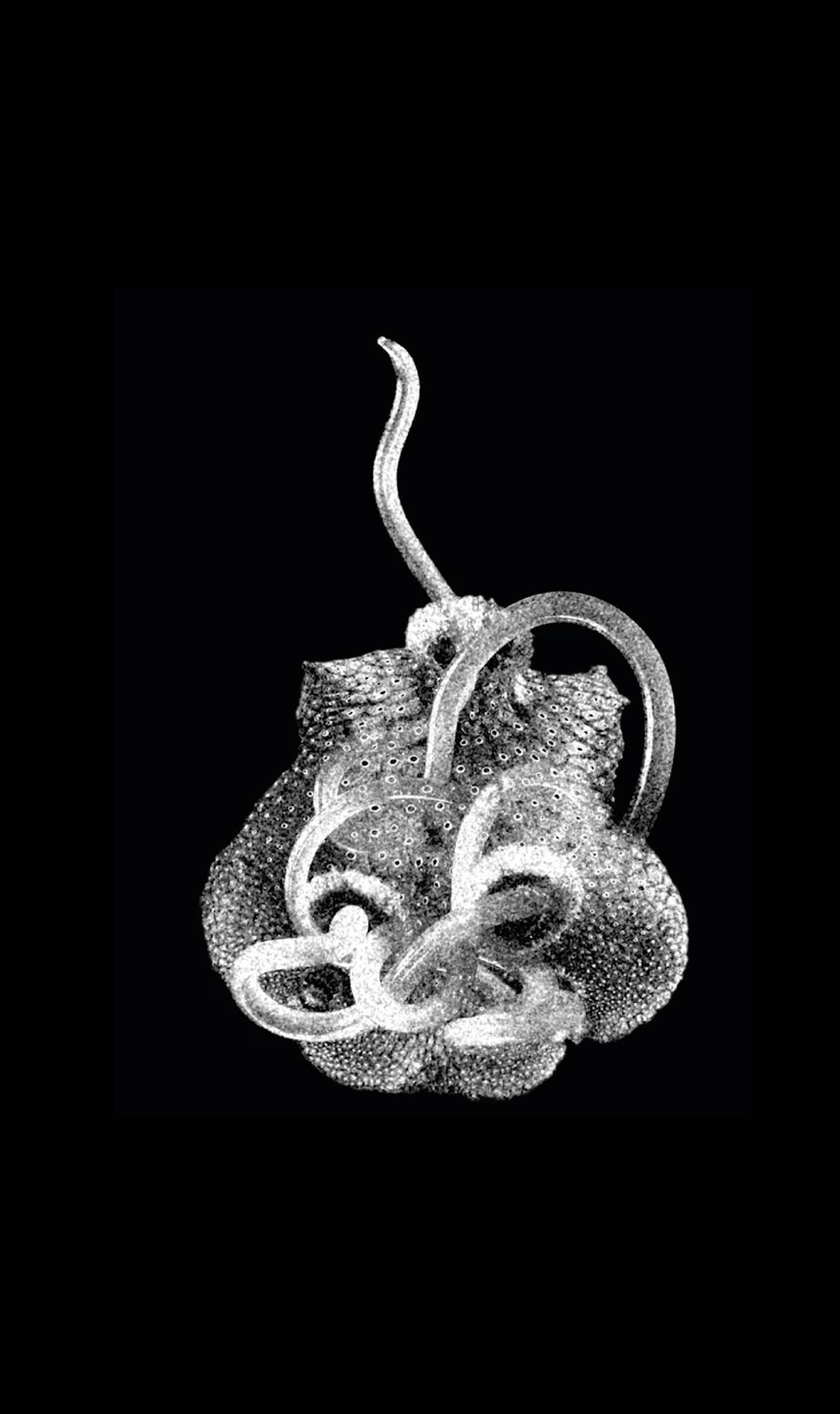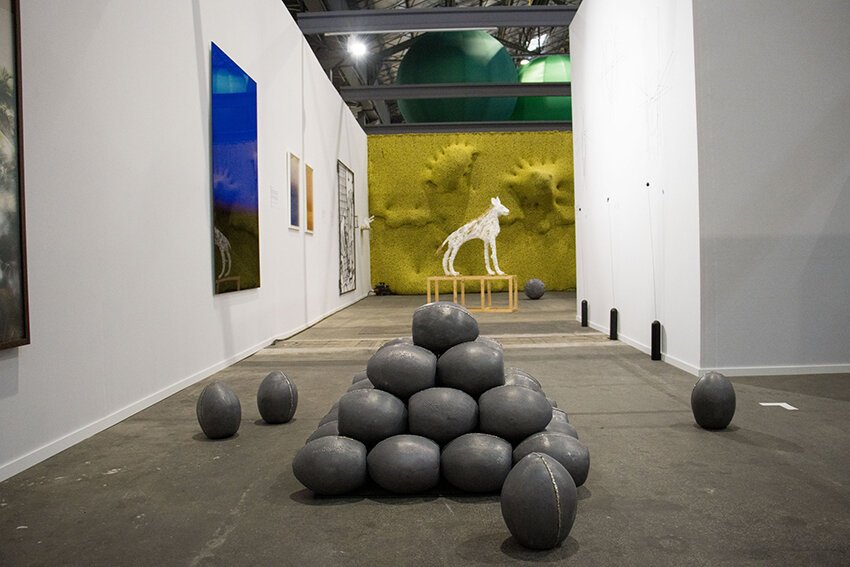Marie-Sarah Adenis & John Gerrard
28 August–25 September 2021, Marseille
John Gerrard : "X. Laevis (spacelab)", screen capture of a video simulation © John Gerrard, 2017 // Marie-Sarah Adenis : "toustezincs", vidéo still - Chimère d’un crapaud et d’un orangs-outans © Marie-Sarah Adenis, 2021
At the occasion of the exhibition Biocenosis 21 (September 4-11) proposed by Art of Change 21 (curator: Alice Audouin) for the UICN World Conservation Congress; Art of Change 21 and La Traverse unite from August 28 to September 11 during ART-O-RAMA, to highlight two artists from the exhibition, Marie-Sarah Adenis and John Gerrard.
Marie-Sarah Adenis, "Temple Phylogénétique"
About: Marie-Sarah Adenis
French artist (designer and biologist by training) Marie-Sarah Adenis focuses on the living world. At a time when connecting and reconnecting with the living becomes preponderant and a necessity, she invents new modes of representation to rethink our place within the great arch of the living, in order to renew our way of living together in the world.
Laureat of the Audi Talents, she will have an exhibition focuses on DNA at the Palais de Tokyo in November 2021. Artist and eco-entrepreneur, Marie-Sarah Adenis is also co-founder of the company PILI, which develops ecological technology for color production, thanks to bacterial fermentation, to definitively stem the era of petrochemical dyes.
Installation specially designed for La Traverse and Biocenosis21, composed of a sculpture, Phylogenetic Temple and a video, Tousteszincs. This installation offers new points of view on the diversity of the living world and its interdependencies. The backdrop to this staging of the living world is a phylogenetic network that describes the evolution and kinship ties of the living. The phylogenetic temple sculpture transforms this network of links into a building that takes the form of a dome deploying a hundred points of support on the ground, that is to say the great families of species whose disappearance weakens the whole of this common architecture that is life on Earth.
Ressources : PILI - Les usines cellulaires de la couleur
About: John Gerrard
Digital artist, but also activist, choreographer and performer, John Gerrard is the famous creator of the work Western Flag, which has become the emblem of the denunciation of climate skepticism since the election of D. Trump. Its monumental numerical simulations, based on advanced technologies, address the themes of oil, renewable energies, inter-species relationships and even agricultural rituals testifying to a different relationship between humans and the environment. As part of the NFT works he offers, John Gerrard launches the debate on the environmental impact of digital, while experimenting with "post-carbon" agriculture on his farm in Ireland.
The work X. laevis (Spacelab) (2017) is a simulation responding to the 18th century experiments of Luigi Galvani on dead frogs. The experiment here simulated digitally takes place two hundred years later, during the space shuttle mission Endeavor in 1992. This experiment established for the first time that vertebrates like the African clawed frog (Xenopus laevis) could reproduce. in the absence of gravity and that its eggs could develop in a space environment. Is it a premonition? Are we moving towards a world in which the maintenance of life will take place outside our planet, which has become uninhabitable?
Ressources : Art Agenda Reviews - John Gerrard's "X. laevis (Spacelab)"
BiOCENOSIS21 (September 4-11)
A collective exhibition of contemporary art on the theme of biodiversity, organized by Art of Change 21, within the IUCN World Conservation Congress.
Artists: Marie-Sarah Adenis, Art Orienté Objet, Thijs Biersteker, Julian Charrière, Marcus Coates, Abdessamad El Montassir, John Gerrard, Jérémy Gobé, Caroline Halley des Fontaines, Camille Henrot, Janet Laurence, Lin-May Saeed, Tomás Saraceno, Michael Wang.
Curated by Alice Audouin
More information on the IUCN World Conservation Congress, held September 3-11, 2021 in Marseille: iucn.org
More information on Art of Change 21: artofchange21.com
Main partners: Schneider Electric Foundation, LVMH Institutional partners: French Biodiversity Office, Ministry of Europe and Foreign Affairs. With the support of Maison Ruinart.
****
More information : latraversemarseille.fr
****






























